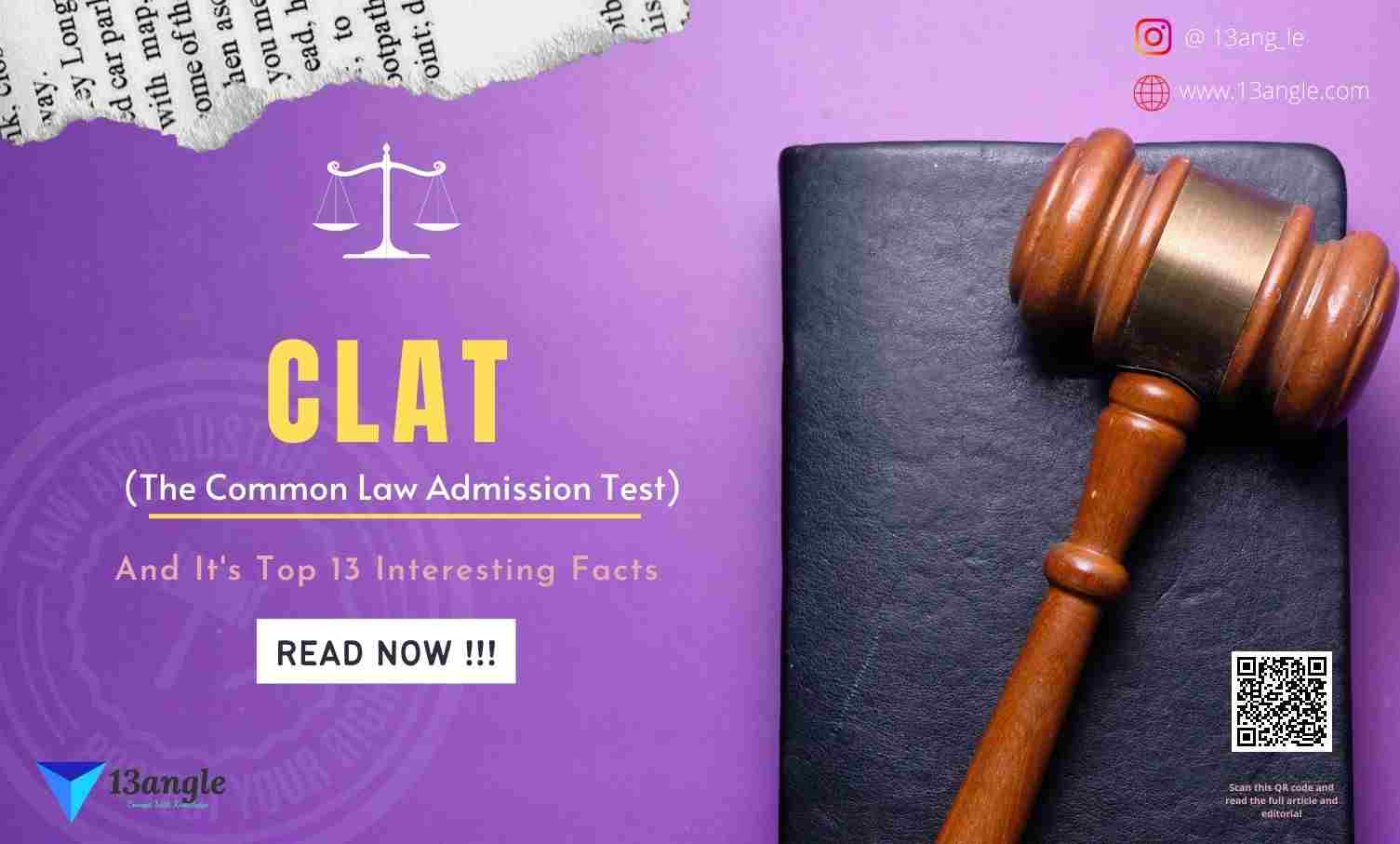
Introduction
The Judiciary is a system that interprets and applies the law. Judiciary is known to provide justice to people. The democracy of India is well famous in the world and has the biggest written constitution in the world. The motto of our Indian Judiciary is, यतो धर्मस्ततो जयः॥ (Yato Dharmastato Jayaḥ), where there is righteousness (dharma), there is victory (Jayah).
- The Supreme Court is also known as the apex court and is the last appellate court in the country. High courts are the top judicial bodies in the state, controlled and managed by the Chief Justice of the state. Below the High Court are District Courts, also known as subordinate courts, controlled and managed by the District & Sessions Judges. The subordinate court system is further classified into two: the civil court of which a Sub-Judge is ahead followed by the Munsif court at the lower level, and the criminal court headed by Chief Judicial/Metropolitan Magistrate at top and followed by ACJM /ACMM & JM/MM at the lower level.
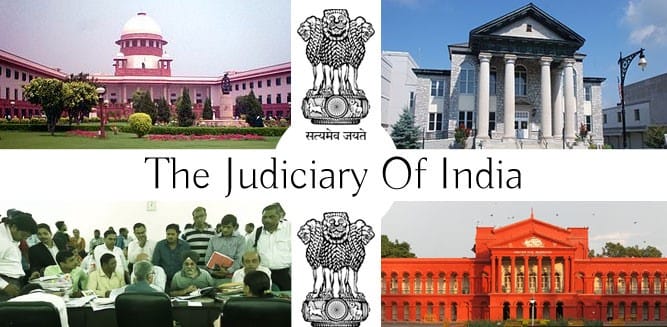
- Today our Judiciary influences or control or rule or have jurisdiction over each and every aspect of our life, either directly or indirectly but it does influence. Decisions or judgment given by courts in India is accepted and followed by each and every person in India. Courts order is like holy says for people.
- Our constitution is the world’s largest and longest constitution. The relation between Judiciary and Constitution is that Constitution empower Judiciary to act as the Guardian of the Law. Therefore in common language can say Judiciary is itself a constitution but this does not mean that the court have unlimited power because in India the doctrine of Constitutionalism is also applied.
History
- Society in ancient India was governed by ‘moral laws’, it was not ‘law’ as we understand it today, since it did not owe its origin to the command of any sovereign, nor was there any habit of obedience to a determine person. Then rishis (known as smritikars) compiled the material at different times with the help of which justice can be provided to the people. The smritis, also knowns as the Dharmashastras (literally, the strings or threads of the rules of Dharma), were the compilation of rules and regulation, based on which justice is provided to people. The principal smritis were three in number. First and foremost in rank of authority was the code or institutes of Manu – the Manusmriti. Then came the code or institution of Yajnavalkya, the Mitakshara being the leading commentary on this code. Next came the code or institution of Narada. Slowly with the time these rules and regulation which were then regulated by religion, were changing and rules of Dharma were on the phase of vanishing and rules of modern time which counts or sees everyone equal were covering the empty chairs of justice and providing people with efficient and quick judgement.

The subject of the legal history of the Indian Judicial system mainly deals with the process of gradual evolution and development of ‘Courts’ and Laws’ in chronological order. History tells us that ‘the roots of the present lie in the past.’ So, this is also the case with legal Institutions. The courts and laws which we see today had evolved and developed from years of experiments and planning. Therefore, in order to appreciate the present judicial system, it becomes necessary to appreciate the past judicial system which evolved after years of hard work and experiments.
Earlier when Kings and Queens were there who ruled over the region were supposed to protect their people and to provide them with justice. People approach their king in matters of dispute in hope of getting justice from their king, from their lord. King’s Durbar is a court of that time and that provides justice to people. Those durbars are courts of that time but not really as organized as today’s courts, not under that strict laws, the king can change or interpret laws as per his own wish, no one was there to question the king. Big zamindars also had courts exercising both civil and criminal jurisdiction within their respective territories. It is to these courts that the origin of the court system in India could be traced.

Courts – Before Britisher came to India the power of giving justice was in the hands of kings, the administration of justice in northern India was in the hands of courts established by the emperor. British came to India around 1600 and they are said to be the people who established the justice or court system in India. Modern courts which you see today are evolved from their ideas and from their establishments. With the advent of the British colonial administration, India witnessed a judicial system introduced on the basis of Anglo-Saxon jurisprudence. The story of India’s Judiciary begins with the Mayor’s court. Under the royal charter of 1661, the Governor-in-Council of each presidency was empowered to judge over all people who belong to that particular region or that shall live under them in all cases, whether civil or criminal, according to the laws and execute judgment accordingly. This power cannot be exercised for, more than two decades in Madras. In 1678, the Governor- in-council decided that they will have two sitting per week to hear and judge all cases concerns European and Indian people according to English Law, in 1687, another charter authorized the company to establish a municipality at Madras. This helps in increasing efficiency and to establish more power of English people in Madras and to control the people from the ground level and to control the full judicial system by the English people, controlled by East India Company only.

Under the charter of 1726, a Mayor’s court was established at each presidency town viz. Madras, Bombay, Calcutta. The difference between the old court and this new court was that the earlier Mayor’s court were of the company but the newer court were of the king of England.
In 1772, Warren Hastings introduced judicial plan of 1772 which concise rules and regulation for judicial setup, for effective justice system, which also defines power and territories of each governor and other officers of the East India Company. For civil justice, provincial civil courts styled ‘mofussil dewanny adawlats’ were established in each collectorate, with a superior civil court of appeal at Calcutta called ‘sudder dewanny adawlat’. For criminal justice, criminal courts styled ‘foujdary adawlats’ were also established in each districts, with a superior criminal court called the ‘sudder nizamat adawlats’. The language of these court is Persian. In those days courts of English king cannot be established as in the eye of law the status of East India Company is that of zamindar ( later of diwan), operating under Mughal Suzerainty.
Supreme Court at Calcutta – Regulating Act of 1773 established for the first time the supreme court of fort Williams in Calcutta in 1774, consisting of a chief justice and three judges appointed by the crown acting as king’s court. Thus, establishing this Supreme Court is an act of reformation rather than innovation, for it was intended in fact to occupy the position of the mayor’s court founded in 1727. This court enjoys power like power to punish for contempt, power to try civil and criminal cases, and many more. Appeals against this court can be filled in the king-in-council.
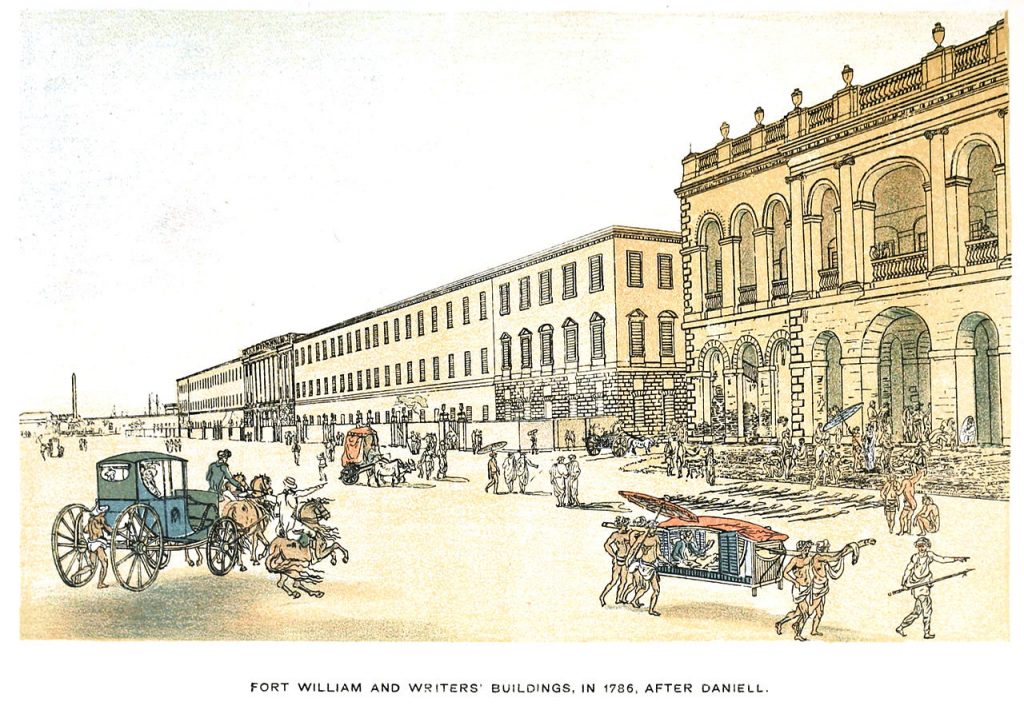
Sir Elijah Imphey was appointed as chief justice of this court.
- The ambiguities of Regulating Act 1773 led to frequent spats between the Supreme Court and the Governor-General in Council. In 1781, this was remedied by substantially curtailing the power of the Supreme Court in favor of the Governor-in-council. However, an attempt was made to separate the judicial meeting of the council from its executive meetings.
- Recorder’s courts – Due to increased activities of the company need was felt to establish a new court. On February 1, 1798, the king issued another charter to establish two Recorder courts at Bombay and Madras. Each Recorder’s court consists of one Recorder, one Mayor, and three Aldermen of the corporation. The Recorder’s Court was the same as that of the Supreme Court established at Calcutta in terms of power, functions, and limitations except in composition. In 1801 and 1824 Supreme Court was established at Madras and Bombay respectively. The constitutional power, functions, limitations, and jurisdiction of these courts were the same as that of the Supreme Court at Calcutta. These Supreme Court functioned until 1862 when they were replaced by the High Court at all three places.
- Establishment of High Court – The year 1861 constituted a landmark in the development of the legal and judicial institutions in India. It was during this year that the steps were taken to establish High Court at Calcutta, Madras, and Bombay. These High Courts were not only better instruments of justice than the preceding courts but also represent the amalgamation of the hitherto existing two disparate and distinct judicial systems, the company’s court in the Provinces of Bengal, Bombay, Madras and the three Supreme Court in the Presidency town.
- Indian High Court Act 1861 – The Indian High Court Act of 1861 was passed by British Parliament to authorize British Monarch to create High Court in India. The main objective of this act was to effect a fusion of the Supreme Court and the Sadar Adalats in the three Presidencies. The High Court of Calcutta, Madras, and Bombay was established in their place. Each High Court was to consist of a chief justice and not more than 15 regular judges.
- The High Court enjoyed the same power over all persons and estates and had original, appellate, and extraordinary original jurisdiction in civil cases whereas extraordinary and appellate jurisdiction in criminal cases. Appeals from High Court would be now taken to Privy Council.
- Federal Court and Supreme Court of India – A Federal Court at Delhi was established under the government of India Act 1935. This court served as the immediate precursor to the current Supreme Court of India. It is composed of a chief justice and not more than six judges. It has original, appellate, and advisory jurisdiction. Appeal from Federal Court could go to Privy Council without leave in case of original jurisdiction and with leave for any other matter. Its exclusive original jurisdiction was in all disputes between the federation and the units or between the units of the proposed federation. The constituent Assembly passed the Abolition of Privy Council jurisdiction act in 1949 to abolish the jurisdiction of the Privy Council in respect of appeals from India and also to provide for pending appeals. With this, India’s Supreme Court was established at the top of the unitary judicial system in India.
- A notable feature of the British-Indian judicial system before 1862 was the existence of two parallel systems of courts – the Supreme Courts in the Presidency towns and the adalats in the areas known ‘mofussil’, outside the presidency towns.
- The legal system at the village level – Arbitration in India, was a British innovation: an adjunct to the British court system. It did not infiltrate into the village of India, where panchayats had existed for thousands of years. The Hindi words ‘panch’ (arbiter) and ‘panchayat’ (a panel or group of arbiters) are probably as old as Indian folklore. Literally, ‘panchayat’ means a group or coming together of five people to judge or resolve the dispute in the village. Panchayat consists of five people mostly elected or selected by the king of the region, in some parts people of a particular village are also offered to select the people who will be supposed to resolve the disputes between the people.
- Many corrections or changes were made after, in the British judiciary system. Many new courts with a new legal system and new laws were introduced with proper division of judges in courts and with fully written and well-defined punishments for crimes.
Present Scenario Of Indian Judiciary
- Government of India Act of 1935 set up the Federal Court of India to act as an intermediate Appellate Court between the High Court and the ‘Privy Council’ in regard to matters involving the interpretation of the Indian Constitution. Despite the restrictions placed on it, Federal Court continued to function till January 26, 1950, when independence India’s Constitution came into force. The unitary judicial system seems to have been accepted with the least questioning. The Supreme Court was to have a special, countrywide responsibility for the protection of individual rights. With the Indian independence in 1947, the judicial system had to be modified to suit the changed conditions. The jurisdiction of the Privy Council over the Indian appeals came to an end with the establishment of the Supreme Court of India on January 26, 1950. It must be stated that the pattern of Indian judicial administration even after independence more or less remains the same. Thus, the modern judicial system is essentially the same as bequeathed to us by the British rulers.
- Presently, India has a fairly advanced judicial system having a well-defined hierarchy of courts with the Supreme Court at the apex and a number of subordinate courts below it. The primary object of judicial administration is to ensure-handed justice to all alike and establish rule of law throughout the country. The independence of the judiciary has been well guarded by the constitution of India and the provisions of appeal are fair to ensure justice to the common man.
- Modern Nation-States function through a set of institutions. The British reforms helped India in its present legislative framework. The parliament, the judiciary and executive apparatus such as bureaucracy and the police and the formal structure of union – State relation as well as the electoral system are the set of institution consisted by the idea of constitutionalism. The legal system derives its authority from the constitution and is deeply embedded in political system. Indian judiciary is a single integrated and unified system of courts for the union as well as the states, which administers both the union and state laws, and at the head of the entire system stands the Supreme Court of India.
- The Indian judicial system follows the common law system based on recorded judicial precedents as inherited from the British colonial legacy. The court system of India comprises the Supreme Court of India, the High Court, and the Subordinate court at the district, municipal, and village levels.
Hierarchy of Courts
- Indian Judiciary is divided into several levels for effective hearing and to address matters at the grassroots level.
1. Supreme Court
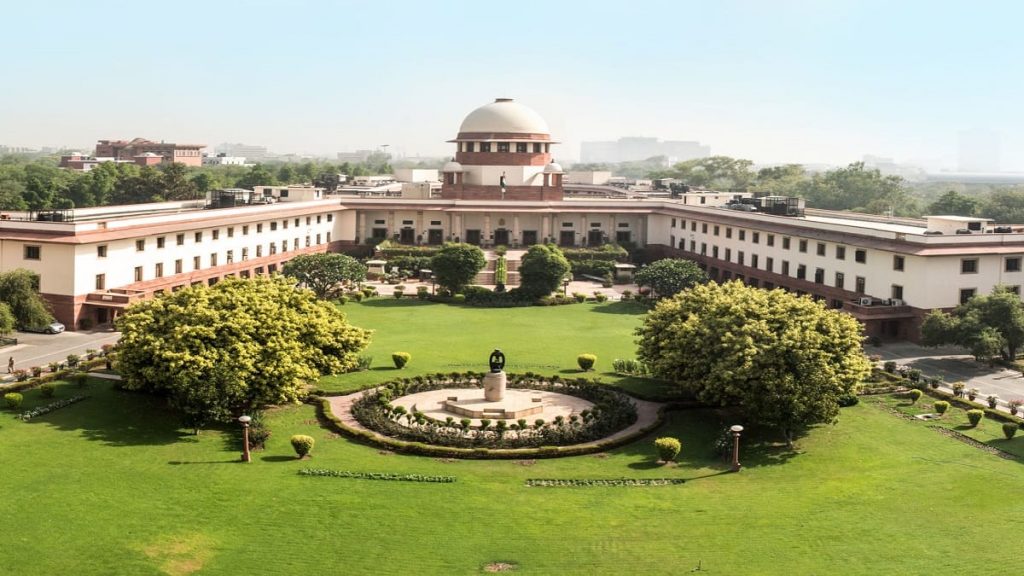
- It is also known as the apex court of the country and was constituted on 28th January 1950. It is the highest court of appeal in the country and enjoys both original suits and appeals of High Court judgments. The Supreme Court comprises of one chief justice and 33 Judges at present. Article 124-147 of the constitution of India lays down the authority of the Supreme Court.
2. High Court
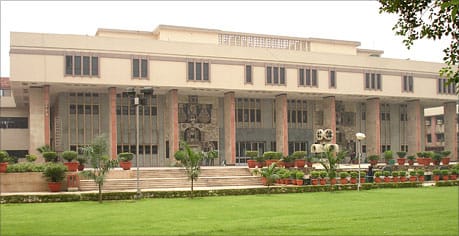
- It is the highest judicial body at the state level. Article 214 lays down the authority of High Courts. High Court exercises civil or criminal jurisdiction only if subordinate courts in the state are not competent to try the matters. There are total 25 High Court in India. High Court may even take appeals from lower courts. High Court judges are appointed by President OF India upon consultation with the chief justice of India, chief justice of High Court and Governor of the state.
3. District Court

- District courts are established by the state government of India for every district or group of districts based on the caseload and population density. District Court is under direct administration of High Court and is bound by the High Court judgments.
Every district generally has two kinds of courts –
- Civil Courts and Criminal Court District courts are presided over by District Judges. Additional District Judges and Assistant District judges may be appointed based on the caseload. Appeals against District Court judgment lie in the High Court.
- Lok Adalats / Village Courts – These are subordinate courts at the village level which provide a system for alternative dispute resolution in the village.
- Tribunals – The constitution provides the government with the power to set up special Tribunals for the administration of specific matters such as tax cases, land cases, consumer cases, etc.
- Appellate jurisdiction – Appellate jurisdiction refers to the authority of a court to rehear/review a case decided by a lower court. In India, appellate jurisdiction is vested in both Supreme Court and High Courts. They may either overrule or uphold the judgment of lower courts.
- Article 141 and 144 of the constitution uphold the authority and jurisdiction given to the Supreme Court to make decisions and uphold the law of the land. According to section 26 of the CrPC, any offense mentioned under the Indian Penal Code may be tried by High Court, Court of Session, and any other court as specified in the First Schedule of the Code of Criminal Procedure.
- Binding value of Judicial Precedents – Since India is a common law country, previously decided judgments of higher courts such as the Supreme Court and High Court are binding on subordinate and lower courts. Precedents are an important source of law in India.
Decisions of the Supreme Court are binding on all courts in India. The Supreme Court is not bound by the decision of the High Court, lower court, or any other judicial authority in the country.
Decisions of a High Court are binding on all inferior courts within its jurisdiction. In case the decision of the High Court conflicts with the decision of a similar bench, the matter is referred to a higher bench.
Lower courts are bound by the decisions of higher courts in their own states. Decisions by the High Court of other states hold only persuasive value.
- Public Interest Litigation (PIL) – Public Interest Litigation is an effective tool to advance social justice in India. Borrowed from the American tradition of Social Action Litigation, PILs have been widely used in India to advance the cause of disadvantaged and marginalized communities. The general rule to bring a cause of action in court is the rule of locus Standi i.e. the party must process sufficient connection or suffer particular harm in order to be a party to the case. In PILs, this rule is relaxed considerably as any citizen of India may bring an action in court to reduce a wrong if there has been a breach of Fundamental Rights. PILs are an effective tool in the furtherance of animal protection by allowing animal rights groups and activists to file PILs at the Supreme Court and give a voice to the voiceless.
How Judiciary Influences
- Indian judiciary influences the decision and can restrict the legislative to make laws on a particular law. For example, the legislative cannot make any laws that violate our fundamental rights. Judgment or decision or order passed by courts in India cannot be disobeyed by any person within the territory of India, everyone is entitled to obey the decision of the court. Courts are as a supreme authority in India, whose decision even bound PM of India. Indian Judiciary plays a major role in controlling any major, religious-related disputes.
Supreme court of India`s decision binding not only upon the Central Government, they must not only be binding upon the Provincial Government, they must not only be binding upon the Governments established in the Indian States, but they must also be binding upon District Local Boards, Municipalities, even village panchayats, and taluk boards, in fact, every authority which has been created by law and which has got certain power to make laws, to make rules, or make by-laws. The court’s decision is final and bound the parties to follow and obey the decision of the court. Disputes are settled by the courts and play such a role that it can give higher punishments to the guilty but as per the constitution and one is bound to get through the punishment. Courts play a major role in protecting our constitution, court acts as guardian of the constitution, it protects the constitution and our rights. It protects rights and especially focuses on our fundamental rights and protect our fundamental rights. You can even approach Supreme Court in violation of our fundamental rights. Fundamental rights are part of the basic structure of the constitution. The basic structure includes some of the major rights or most important rights which cannot be changed or removed from the basic structure.
The court interprets the law and explains to people for their better understanding and to make them clear under which law they are governed.
Judiciary And Parliament
- The doctrine of separation of power implies that each pillar of democracy – the executive, legislative, and the judiciary – performs separate functions and acts as separate entities. The executive is vested with the power to make policy decisions and implement laws. The legislative is responsible for enactments. The Judiciary is responsible for adjudicating disputes. The doctrine of separation power is part of the basic structure. The Judicial exercise judicial reviews over executive and legislative action, and the legislative reviews the functioning of the executive. It must be remembered that the court cannot run the government. The judiciary should act as an alarm bell, it should ensure that the executive has become alive to perform its duties. There are some instances where the legislative uses its law-making power to reverse the outcomes of some judgements. On September 7, 2011, the Parliament passed the customs Amendment and validation bill, 2011 which retrospectively validates all duties imposed and actions taken by certain customs officials who were not authorized under the Customs Act to do the stated acts. Some of the duties imposed were in fact challenged before the Supreme Court in Commissioner of Customs vs. Sayed Ali in 2011. Another instance of the legislative overriding the decision of the Supreme Court was seen in the Essential Commodities (Amendment) Ordinance, 2009 which was passed into an Act. The Supreme Court had ruled that the price at which the Centre shall buy sugar from the mill shall include the statutory minimum price (SMP) and an additional amount of profit that the mills share with farmers. In effect, the amendment overruled the court decision. The Judiciary has also acted in several instances in the grey areas separating its role from that of the executive and the legislature.
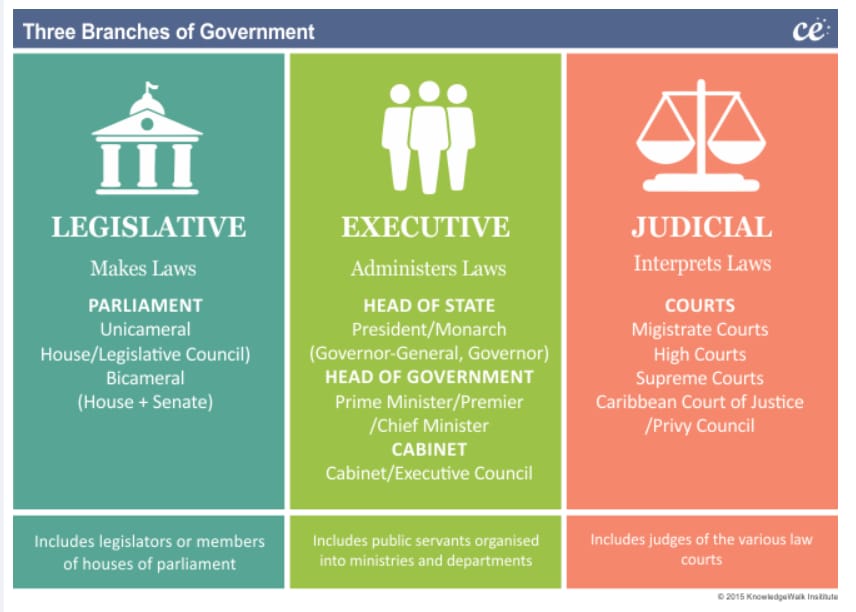
- Judiciary also plays an important role in decision making or for finalizing an act that passed from parliament or is in decision making. Judiciary plays a role of check and mate in the decision-making process of parliament, Judiciary checks if laws made or passed by parliament do not hamper or violate the fundament right of individual or whether it violates any other major rights of individual, which were given or provided by the constitution of India.

- Judicial Proceeding cannot happen on parliament while there is a discussion or debates going in parliament, MPs, MLAs are free to saying anything but if any case is going on in court and if these people or parliament says anything related to that particular case then judicial procedding can happen on parliament.
International Judiciary
- The International Court of Justice is the principal judicial organ of the United Nations (UN). It was established in June 1945 by the charter of United Nations and began work in April 1946. The seat of the Court is at the Peace Palace in The Hague (Netherlands). ICJ is United Nations only permanent court of justice, which peacefully resolves the disputes through adjudication. ICJ settles disputes of land and boundaries, uses of force, genocide, use of nuclear weapons, protection of the environment, immunities of high level government officials and states.

- ICJ is the successor of the Permanent Court of International Justice, which came into existence in 1922 and which associated with the League of Nations. There are 15 judges in ICJ at a time. The election of ICJ judges is done by two organs of the UN General Assembly and the UN Security Council. Once selected judges are there for the tenure of 9 years and selection of judges always takes place after years. Permanent five-member of the UN Security Council are always represented at ICJ.

- The main function of the ICJ is to settle disputes between the states and it also provides advice to UN General Assembly, UN Security Council, and UN specialized agencies.
Conclusion
‘Court’ and ‘Laws’ are the two very important instruments of justice. It is only through the execution of good law that impartiality in the administration of the judicial system can be maintained. It has been rightly said that law is a dynamic concept that keeps on changing from time to time and place to place to suit the need and condition of a given society which is constantly changing and developing with the advancement of human knowledge and civilization. The structure of courts in India is like a pyramid. The Supreme Court is the Apex Court in India. The Highest Court in the state is High Court. Then there are subordinate Courts at District, Sub-Division, and tehsil level.
The growth, evolution, and development of the modern Indian Judicial system is not the creation of one man or of one day. It is rather an outcome of the concerted efforts and experience of a number of able administrators who labored patiently for generations. Indian Judiciary is effective in decision making or in giving any judgment and in protecting the right of people and to protect their dignity, to protect their life. Indian Judicial system is a somewhat complex system but it is well defined and arranged in a fine manner.
Top 13 Interesting Facts
.Cornelia Sorabji is India’s first women lawyer. While women in Britain were campaigning for the right to vote. Cornelia Sorabji became the first woman to practice law in India.
India has almost 4 crores pending cases spanning the Supreme Court, various High Court, District Courts, and Subordinate Courts and in most of these atleast one party is government.
There are approximately 4 to 5 lakh students pursuing law courses in India. Out of which almost 60,000 to 70,000 law graduates join the legal professions every year. India has 15 judges for every million people, one of the world’s lowest ratios.
22million people are under trial in India for more than there are people in the Netherlands (Population 16.8 million in 2013).
The original handwritten copies of the Constitution are kept in Helium-filled cases in the library of the Parliament house.
Fundamental Rights which are protected by our Judiciary have also been adopted from the American Constitution.
The opening ceremony of the Supreme Court of India was organized in the Chamber of Princes in the Parliament premises. Do you know that for a period of 12 years i.e. from 1937-1950 the Chamber of Princes was used as the bench of judicature in India and also the Supreme Court up to the time when it obtained its current building in 1958?
The building of the Supreme Court is designed and shaped in such a way that it represents the scale of justice. As Rajendra Prasad stated that the two pans of the scale of justice have to be held evenly. It is the central wing of the SC building that comprises the Chief Justice’s court and two larger courtrooms on either side represent the central beam of the scale of justice.
According to article 126, the President appoints any other judge of the Supreme Court as an acting Chief justice when CJI is absent.
The design of the court’s seal is reproduced from the wheel that appears on the Sarnath Lion Capital of Ashoka with 24 spokes.
Do you know that the first woman judge and the first woman SC judge of India were from the literate state of Kerala? The first one was Ms. Anna Chandy and the second, was Fatima Beevi. The first woman judge of SC of India and also in Asia was Fathima Beevi who was appointed to Supreme Court in 1959.
In its formative years, the apex court met from 10 am to 12 and then from 2 pm to 4 pm for 28 days in a year. But today, it meets for 190 days in a year.
On 29 October, 1954 Dr. Rajendra Prasad the first President of India laid the foundation stone of the Supreme Court building.


